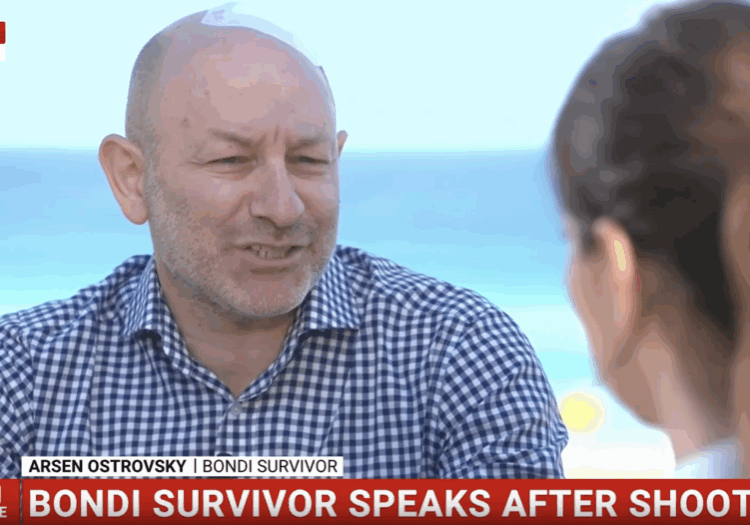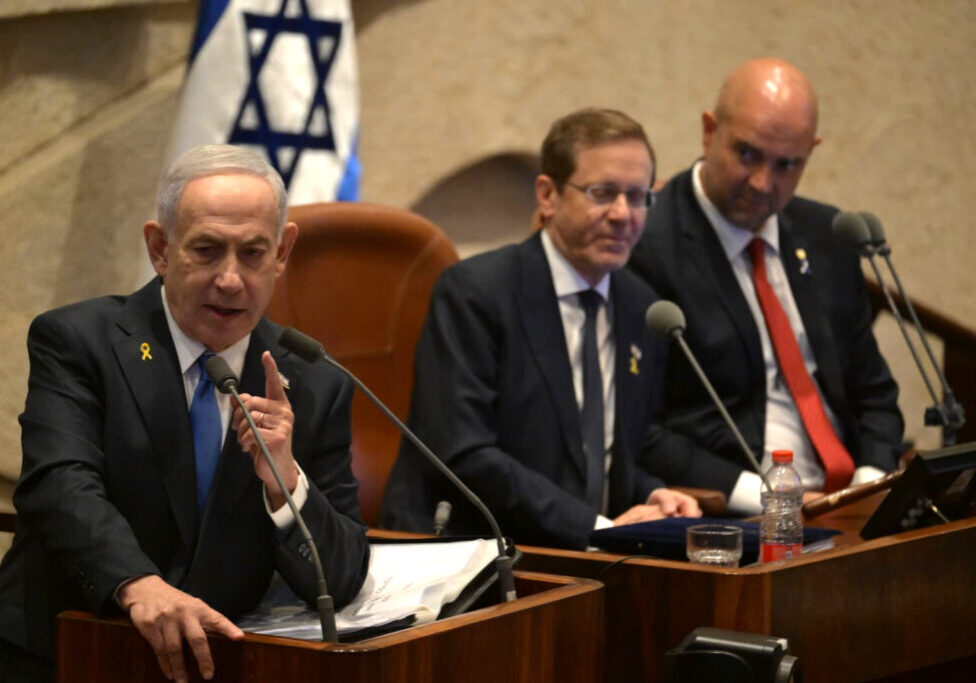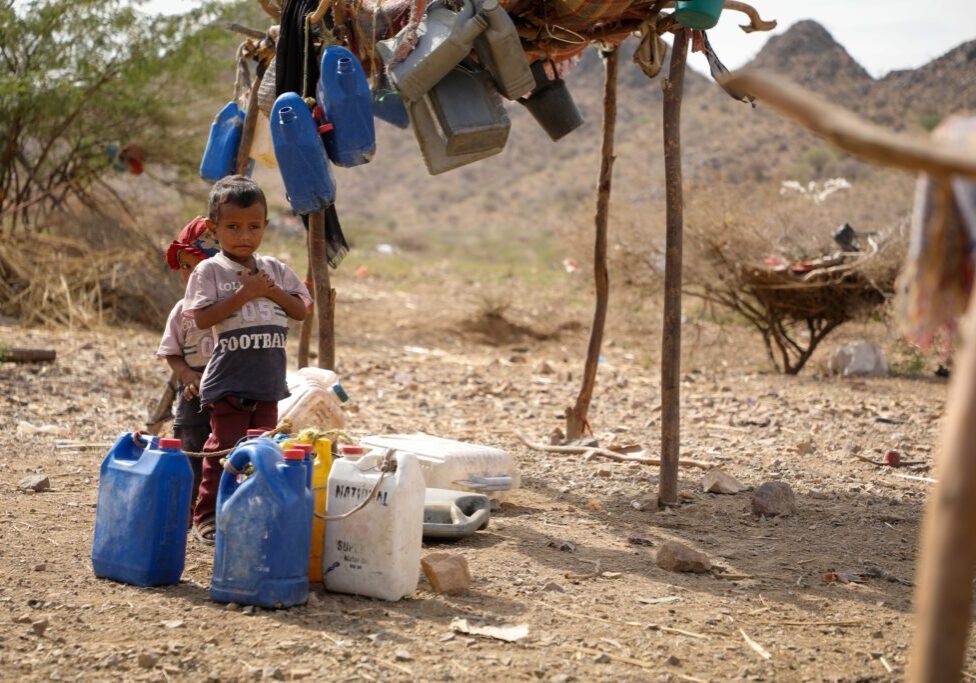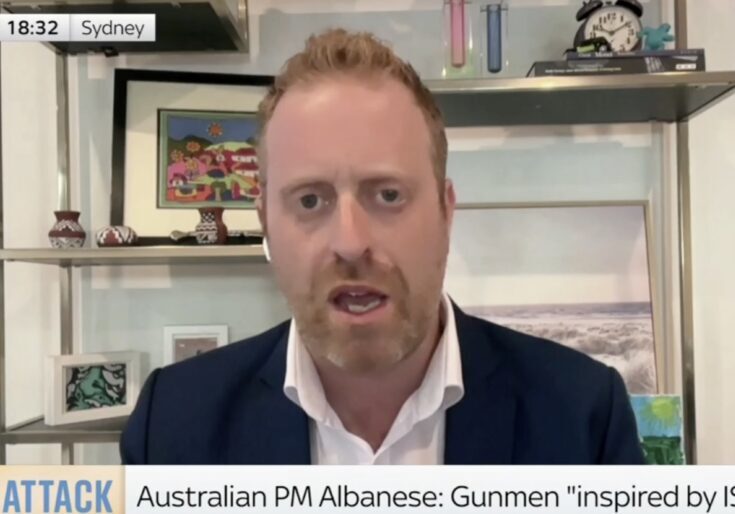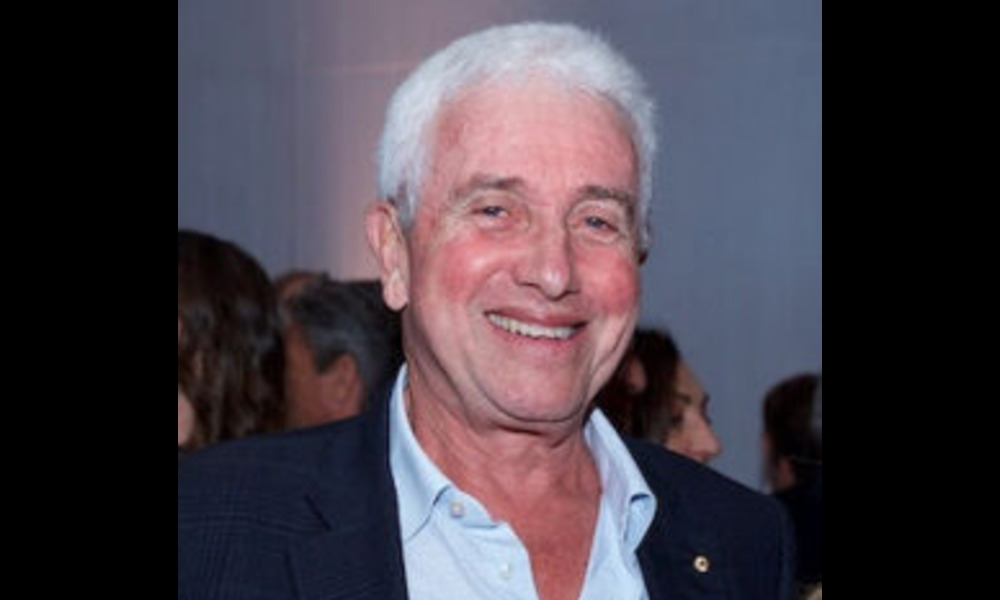FRESH AIR
The Axis of Proliferation
September 13, 2022 | Oved Lobel

We have just passed the 15th anniversary of Operation Orchard/Outside the Box, the unilateral Israeli strike on September 6, 2007, on Syria’s Al Kibar plutonium reactor built by North Korea.
To mark the anniversary, Israel declassified a 2002 Military Intelligence assessment warning of Syria’s interest in a nuclear weapons program. While this is not new information, it once again highlights Israel’s global campaign since the early 1980s aimed at keeping the nuclear proliferation genie in the bottle, especially by taking on the so-called AQ Khan network responsible for so much of the world’s nuclear proliferation and even allegedly developing plans to bomb Pakistan’s Kahuta enrichment facility alongside India.
Because of US political and security priorities – and strategic myopia – during the Cold War, the attempt by Israel to kill Pakistan’s program in the cradle ultimately failed. The net result was that the AQ Khan program directly facilitated the Iranian and North Korean nuclear programs, Muammar Qaddafi’s abortive nuclear program in Libya and, both directly and indirectly, what would’ve been a fully-fledged Syrian nuclear weapons program had Israel not acted in 2007.
Now that Iran is technically on the verge of crossing the nuclear threshold, if it hasn’t already, the declassified 2002 document is a timely reminder of what could’ve been in Syria, and the pernicious roles of Iran, North Korea and Pakistan in dangerous nuclear proliferation.
Of course, the role of China, one of the world’s greatest proliferators of nuclear and missile technology, also cannot be overlooked. It was China that first transferred nuclear warhead designs and highly enriched uranium to Pakistan in the 1980s. Neither Pakistan’s nor North Korea’s proliferation activity can be separated from China’s, as Pakistan and North Korea are effectively proxy entities of the Chinese Communist Party, and China has worked directly and via Pakistan and North Korea to build the nuclear and missile programs of Iran, among others. It remains “the most important overseas supplier of items and material for Iran’s missile program, [which has] contributed to Iran’s continued development of more sophisticated missiles with improved accuracy, range, and lethality.” Russia is also deeply involved in these proliferation activities.
Syria’s would-be nuclear program: the role of Iran, North Korea and Pakistan
As US intelligence officials revealed in 2008, Syrian dictator Hafez al-Assad began planning his country’s nuclear weapons program as early as 1997, when senior North Korean nuclear officials and scientists began meeting with the Syrian regime. Like almost all nuclear programs since the 1980s, Syria’s began with Pakistan’s AQ Khan network. From there it is possible to piece together how Pakistan, Iran, North Korea and Syria cooperated.
In their book Deception, journalists Adrian Levy and Catherine Scott-Clark recount how Israeli intelligence found AQ Khan meeting with a senior Syrian regime official in Beirut, accompanied by a Pakistani military officer, likely Brig. Sajawal Khan.
In an interview with the journalists, Moshe Ya’alon, who served as the head of Israeli Military Intelligence at the time in the 1990s and went on to become IDF Chief of the General Staff and then Defence Minister, said:
Khan… was offering nuclear assistance. But we do not know if the deal went through. What we determined was that although Khan was intent on selling to Damascus, he was also keen to use Syria as a conduit to deliver nuclear assistance to Iran.
Around the same time, write Levy and Scott-Clark, senior North Korean military and nuclear delegations began arriving in Iran via Pakistan, beginning as early as 1994.
It makes no sense to argue that North Korea suddenly and coincidentally decided to offer to build Syria a plutonium reactor just after the above North Korean activity in Iran and Khan’s meeting with the Syrian regime in Lebanon. Pakistan and Iran were clearly involved, and for whatever reason all four regimes jointly decided on the North Korean option for the Syrian regime. Given the relationships between these regimes, it is simply not credible to believe that North Korea could cooperate with Syria without Iranian or Pakistani involvement.
One 2009 report in Der Spiegel at least noted the potential for Iranian involvement, citing a 2005 visit to Syria by the erstwhile chief of Iran’s nuclear weapons program, Mohsen Fakhrizadeh, assassinated in Iran in November 2020, as well as by former Iranian president Mahmoud Ahmadinejad:
While the Mossad had tended to be reserved in its assessment of Al Kibar, the three men were now more than convinced that the site posed an existential threat to Israel and that there was evidence of intense cooperation between Syria and North Korea. There also appeared to be proof of connections to Iran. Mohsen Fakhrizadeh-Mahabadi, who experts believed was the head of Iran’s secret “Project 111” for outfitting Iranian missiles with nuclear warheads, had visited Damascus in 2005. Iranian President Mahmoud Ahmadinejad traveled to Syria in 2006, where he is believed to have promised the Syrians more than $1 billion (€675 million) in assistance and urged them to accelerate their efforts.
According to this version of the story, Al Kibar was to be a backup plant for the heavy-water reactor under construction near the Iranian city of Arak, designed to provide plutonium to build a bomb if Iran did not succeed in constructing a weapon using enriched uranium.
Former US National Security Advisor John Bolton also alleged that Iran “almost certainly” financed North Korea’s construction of the reactor.
Pakistan, North Korea and Iran have been cooperating on technology transfer and global jihadism since the 1980s. As I described in a report last year on Afghanistan:
[Pakistani dictator] Zia ul-Haq had repaired Iranian weapons, facilitated the transfer of North Korean weapons and advisers to Iran’s [Islamic Revolutionary Guard Corps (IRGC)] camps, and provided Pakistani military trainers for the IRGC’s ‘Taleghani Center,’ where the IRGC and [Pakistan’s Inter-Services Intelligence (ISI)] worked in lockstep to form a jihadist cadre that could be sent back to every country to launch terrorist attacks and mount insurrections. Aside from Bosnia, the ISI gave North Korea blueprints and parts for the famous American stinger missiles as part of a manufacturing agreement, later financed by Iran.
Long before the Islamic Revolution of 1979, North Korea was acting as a Soviet proxy in the Middle East, even sending its own pilots and air force to attack Israel during the Yom Kippur war of 1973. Despite occasional false claims by officials and analysts that the primary motivation for such activity by regimes like North Korea’s or Pakistan’s is cash, the drive is first and foremost ideological – money is a bonus.
The regimes in Iran, Syria and North Korea have long been part of an indivisible partnership, the outgrowth of the Cold War Soviet networks about which I wrote earlier this year:
[Ayatollah] Khomeini’s network has been inextricably intertwined with the Assad dynasty in Syria since before the Islamic Revolution, and the overall pattern has been one of such close coordination that it is impossible to tell where one ends and the other begins.
The CIA assessed in 1988 that it was North Korea that helped build the alleged Iranian chemical weapons program in the 1980s, no doubt acting on behalf of the Soviet Union, which often used Communist or other third-world client states to conduct deniable foreign policy.
In this it was helped by Syria, another Soviet client, which the Washington Post reported in October 1985 transferred its chemical weapons capability to Iran, although a report in the Washington Times in December that year said it may not have gone through with these plans.
North Korea, along with Syria and other clients like Libya, also acted as a conduit for Soviet military support to Iran during the Iran-Iraq war, including some of Iran’s first ballistic missiles. As documented by Pierre Razoux, of all the Soviet clients helping Iran on the USSR’s behalf, North Korea was the largest single supporter, deploying military advisors in Iran; manufacturing Frog-7 missiles for Iran; and transferring to Teheran hundreds of missiles, tanks, multiple rocket launchers, air defence systems, and countless other weapons along with millions of artillery shells and other ammunition.
Since then, North Korea, Syria and Iran have cooperated at every level on ballistic missile development, and North Korea has been deeply involved in Syria’s chemical weapons program. North Korea was even rumoured to have built an underground military base in Syria in 2018 near Qardaha in Latakia.
A 2021 UN Panel of Experts report on North Korea detailed just how close missile cooperation remains, as well as the fact that Syria is the base from which Iran and North Korea jointly provide support for Ansar Allah, also known as the Houthis, of Yemen. Claudia Rosett, then in her capacity as journalist-in-residence at the Foundation for Defense of Democracies, testified to the US Congressional committee in 2015 on the topic of “The Iran-North Korea Strategic Alliance” that “North Korea has been of substantial assistance to Hezbollah.”
At the centre of the trilateral cooperation is Syria’s Scientific Studies and Research Centre (SSRC or CERS), which is little more than a Syrian front entity for joint Iranian-North Korean development of missiles and weapons of mass destruction (WMD). This is done through organisations like North Korea’s Korea Mining Development Trading Corporation (KOMID) and various subsidiaries of Iran’s Ministry of Defence and Armed Forces Logistics (MODAFL), such as the Shahid Hemat Industrial Group (SHIG) and Shahid Bagheri Industrial Group (SBIG), among others, all overseen by the IRGC.
Israel has targeted Iranian-supervised SSRC facilities across Syria several times over recent years. In August 2018, it allegedly assassinated Aziz Asbar, an SSRC research director and one of the most prominent rocket scientists in the organisation. According to Charles Lister, an expert at the Middle East Institute:
Previously the leader of the SSRC-linked “Institute 4000,” which allegedly coordinates chemical weapons research and development, Asbar directed Syria’s “Department 4”—responsible for developing ballistic missiles, heavy artillery rockets, and precision guidance technology. Asbar has been personally linked to the Fateh-110 redevelopment program, converting sophisticated Iranian missiles into an indigenous version, the Tishreen. He has also been accused of involvement in producing Syrian Maysaloun heavy rockets and of running Syria’s so-called “Iran Coordination Committee,” a secretive agency responsible for receiving and distributing weapons from Iran both to Syrian pro-Assad forces and to Hezbollah and other Iran-backed militias.
So closely intertwined are Syria, Iran and North Korea that the US actually has a sanctions law entitled the “Iran, North Korea, and Syria Nonproliferation Act (INKSNA)”.
North Korea and Iran have also likely been cooperating in the nuclear arena. It is not reasonable to believe that their overt cooperation on ballistic missile development has been compartmentalised: whatever technology North Korea currently possesses, including nuclear warhead designs and intercontinental ballistic missiles, Iran almost certainly also possesses, and likely contributed to developing. Like China and Pakistan, these are wholesale proliferators, selling not only enrichment programs in a box, but weapon designs, as well.
In the aforementioned committee hearing in 2015 on Iran-North Korean nuclear cooperation, then US Representative Ted Poe said:
There is growing evidence that Iran and North Korea have not only been cooperating on missile programs but also in the nuclear field. The media reports, as far as back as 1993, that there are indications that the Iranians financed North Korea’s nuclear program with $500 million in return for nuclear technology. South Korean news outlets rang the alarm in 2011 alleging that hundreds of North Korean nuclear and missile experts were working in Iran. One of those places that had North Korean experts working in it was Natanz, a nuclear facility where centrifuges will continue to enrich uranium under the nuclear deal.
Iranian defectors have also revealed a long history of North Korean experts working on the Iranian nuclear program. Just like with the missile program, Iranian officials have attended nearly every North Korean nuclear test, gleaning important information to improve their nuclear program. Last month, an Iranian opposition group claimed that nuclear expert delegations from North Korea had travelled to Iran three times this year alone. The delegations allegedly met with Iranian officials responsible for nuclear warhead design.
While claims by this “Iranian opposition group”, the Mujahedin-e-Khalq (MEK), also known as the National Council of Resistance of Iran (NCRI), among other aliases, must always be taken with a large helping of salt, the organisation has been used by Israel and the US to leak intelligence on Iranian nuclear activity.
Conclusion
Unfortunately, few assessments of Syria’s would-be nuclear program to date have mentioned the links with Iran or Pakistan or explored their deep relationships with North Korea. Should Iran choose to build nuclear weapons, there is little doubt Syria will suddenly and not so mysteriously become a nuclear power as well, with a little help from its friends. While a 2015 Der Spiegel report on another potential underground nuclear-related site at Qusayr was never confirmed, there is no reason to believe Bashar al-Assad has given up on his pursuit. Considering his prodigious use of WMD over the last decade against his own citizens, the world must be thankful that Israel was willing to take such unilateral action in 2007. It may have to do so again.
Tags: AQ Khan, Ansar Allah, China, Hezbollah, Iran, MEK, NCRI, North Korea, Pakistan, Qaddafi, Syria, Yemen, nuclear, proliferation
RELATED ARTICLES

The Government’s actions still fall short: Joel Burnie on FDD Morning Brief
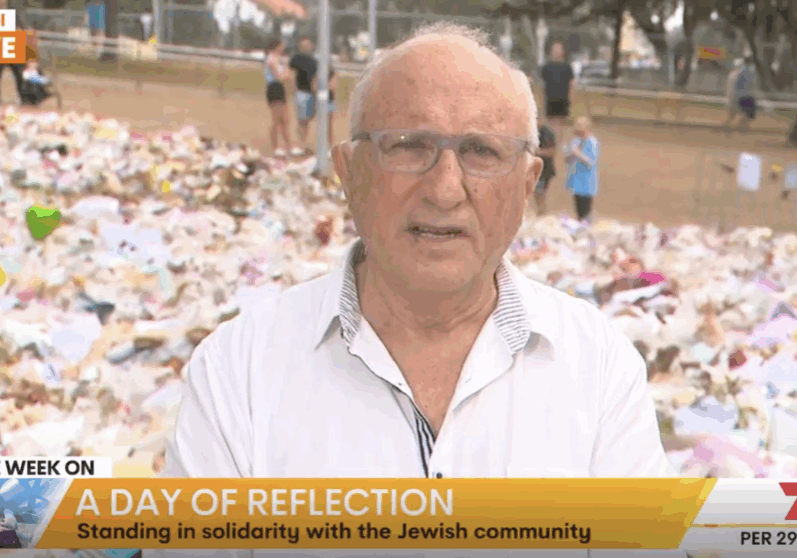
“The writing was on the wall for a number of years”: Colin Rubenstein on Channel 7 Weekend Sunrise
